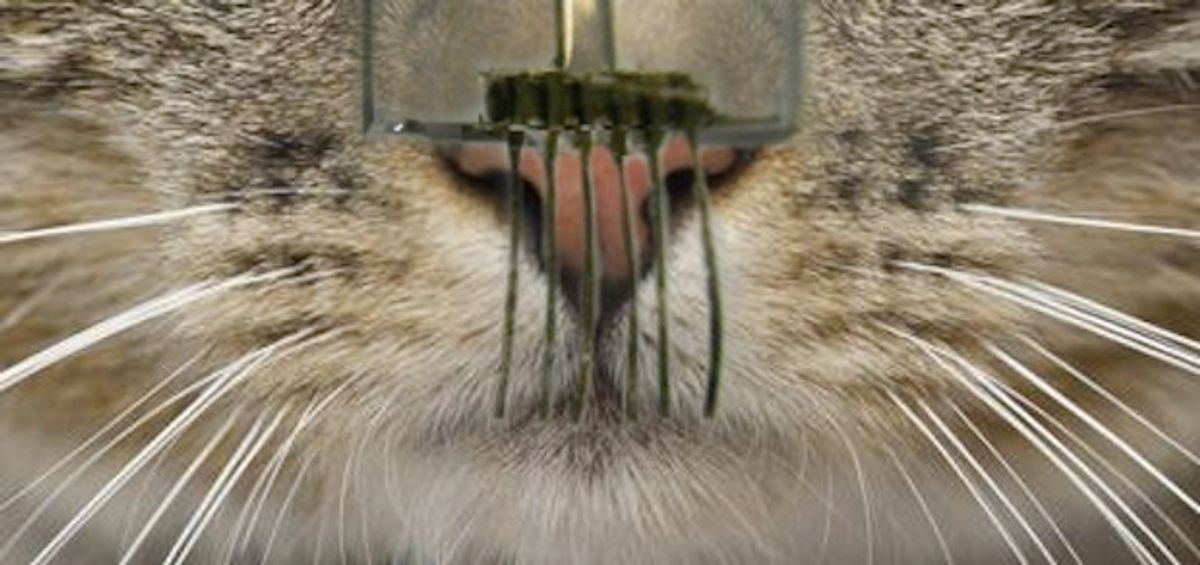Robots have been relying on whiskers, of a sort, for a very long time. In a general sense, a whisker is simply a switch attached to some sort of sticky-outy thing, such that when the sticky-outy thing encounters an obstacle, it transmits that encounter to the switch, warning the robot that it's about to run into said obstacle. These sorts of primitive whiskers are like infrared or sonar obstacle detectors, except cheaper, simpler, and (depending on the application) more robust.
The current generation of robotic whiskers are much more directly inspired by biology: specifically, they're intended to provide a reliable method of sensing in very dark, very cluttered environments. A few years ago, we met a robot from the Bristol Robotics Lab that featured a mobile whisker array modeled on the Etruscan pygmy shrew, which is able to not only detect objects, but also able to analyze their shape and texture through touch alone. This is an impressive capability, although it requires an impressive amount of hardware (cute hardware, to be fair) to get it to work. The downside of this is that implementing intelligent whiskers like these turns into a project that defines the robots, as opposed to just another sensing system that can be added to increase the robot's adaptability and versatility.
So what about the next generation, then? Last week, researchers from Lawrence Berkeley National Laboratory and UC Berkeley went nanoscale, with a design for electronic whiskers that are far smaller (and about 10 times more sensitive) than ever before. The researchers say the sensor could "enable a wide range of applications in advanced robotics and human–machine interfacing." And perhaps to illustrate the potential cuteness factor of robotic whiskers, they created the image you see at the top of this post, showing their device next to its natural counterpart (i.e. real cat whiskers).
The first thing you'll notice about these e-whiskers is that they're tiny. And part of the reason that they're tiny (perhaps this is the second thing you noticed) is that the mechanical infrastructure required to support them is minimal. This is because the whiskers themselves are made of tunable composite films of carbon nanotubes and silver nanoparticles, patterned onto elastic fibers, that form their own strain sensors, allowing deformation to be measured by changes in voltage. The e-whiskers can sense changes in pressure down to about one single Pascal, which is about the equivalent of the pressure that a dollar bill puts on a surface that it's resting on.
Such high sensitivity (along with high dynamic range) means that the e-whiskers can be used for much more than just obstacle detection. The example above shows them sensing three-dimensional gas flow, which means that they'd be just fine at sensing wind speed and direction outside, but really the key here is that these things are small, lightweight, tunable, and easy and cheap to manufacture to the point where it's worth wondering why (at some point in the near future) you wouldn't want to just cover your robot entirely in whiskers.
Evan Ackerman is a senior editor at IEEE Spectrum. Since 2007, he has written over 6,000 articles on robotics and technology. He has a degree in Martian geology and is excellent at playing bagpipes.




